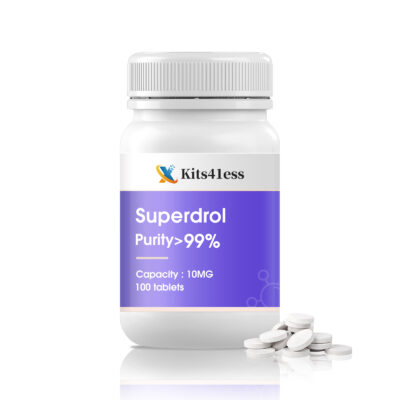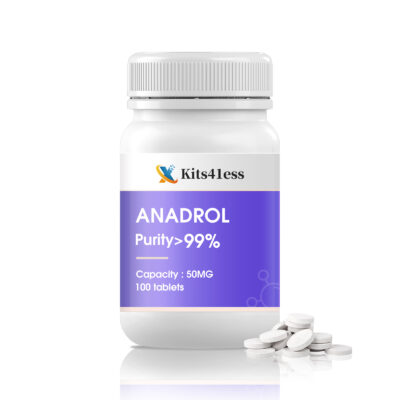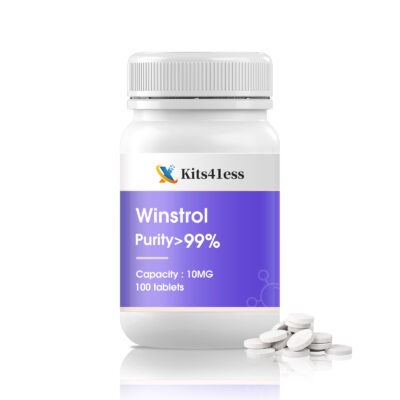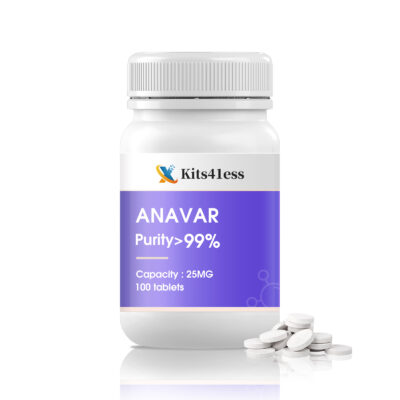GW-501516-Cardarine
$35.00
GW-501516, also known as Cardarine, is a controversial research compound. It was originally developed to treat metabolic and cardiovascular diseases. Its unique chemical structure (6-[2-[[4-(2-methylpropyl) phenyl] methyl] phenoxy]-2-naphthoic acid, chemical formula C₂₅H₂₄O₃) enables it to bind tightly to PPARδ receptors, activate downstream signaling pathways, and change the body’s metabolic pattern.
In terms of potential efficacy, it can be called a “potential stock” in the field of sports. Animal experiments show that the exercise endurance of mice using it has been greatly improved, and the continuous exercise time on the treadmill has been extended from 160 minutes to 270 minutes. The reason is that it can prompt muscles to consume fat for energy first and delay fatigue. At the same time, it has also begun to show its edge in improving blood lipids and regulating blood sugar. It has the potential to reduce the risk of cardiovascular disease and improve insulin resistance, and even shows hope for the treatment of muscle atrophy. However, most of these are still in the stage of animal experiments and preliminary human studies.
Description
GW-501516-Cardarine Product Introduction
GW-501516, also known as Cardarine, is a highly controversial research compound that has attracted widespread attention in scientific research and some informal application fields. It was originally developed as a potential drug for the treatment of metabolic and cardiovascular diseases, but due to its special efficacy and potential risks, it has not yet obtained widespread clinical application approval and is strictly controlled in many countries and regions.
I. Basic properties
(I) Composition and structure
The chemical name of GW-501516 is 6-[2-[[4-(2-methylpropyl)phenyl]methyl]phenoxy]-2-naphthoic acid, and its chemical formula is C₂₅H₂₄O₃. Its unique molecular structure enables it to specifically bind to peroxisome proliferator-activated receptor δ (PPARδ), a nuclear receptor that plays a key role in regulating energy metabolism, lipid metabolism, and cell differentiation. By tightly binding to PPARδ, GW-501516 activates a series of downstream signaling pathways, which has a profound impact on the body’s metabolic function.
(II) Dosage form and specifications
Common research GW-501516 is usually in powder form with high purity, and is generally measured and distributed in milligrams (mg). Some informal channels also make it into capsules or solution dosage forms, but the quality of these products varies and lacks strict quality control and supervision. In formal scientific research experiments, researchers will accurately weigh the required dose of GW-501516 powder according to the experimental design, dissolve it in a suitable solvent, and prepare a solution of a specific concentration so that it can be accurately administered to the experimental subjects.
(III) Mechanism of action
When GW-501516 enters the human body, it binds to the PPARδ receptor, and the complex formed enters the cell nucleus, binds to specific DNA sequences, and regulates gene expression. This process can promote the oxidative metabolism of fatty acids, allowing muscle cells to preferentially use fat as an energy source and reduce dependence on carbohydrates. At the same time, it can also increase mitochondrial biosynthesis and improve the energy production efficiency of cells, thereby significantly improving the body’s endurance and exercise capacity. In addition, GW-501516 also has a regulatory effect on sugar metabolism, can enhance insulin sensitivity, and help maintain the stability of blood sugar levels. This feature makes it potentially valuable in the study of metabolic diseases such as diabetes.
II. Potential efficacy
(I) Improve exercise endurance
In animal experiments, mice using GW-501516 showed significantly enhanced exercise endurance. Mice without the drug can last an average of 160 minutes on the treadmill, while mice using the drug can run continuously for 270 minutes. This result shows that GW-501516 can change the energy metabolism pathway, allowing muscles to use fat for energy more efficiently during exercise, delay the consumption of blood sugar, and thus delay the occurrence of fatigue, allowing the body to withstand longer and more intense exercise. This feature makes GW-501516 attractive to athletes and fitness enthusiasts, but due to its banned drug properties, it is strictly prohibited to use it in sports events.
(II) Improved metabolic function
By activating PPARδ, GW-501516 can regulate lipid metabolism, reduce the levels of triglycerides and low-density lipoprotein cholesterol (LDL-C) in the blood, and increase the level of high-density lipoprotein cholesterol (HDL-C), which helps to improve dyslipidemia and reduce the risk of cardiovascular disease. In terms of glucose metabolism, it can enhance insulin sensitivity and help cells better absorb and utilize glucose. It has potential research value for preventing and improving insulin resistance-related diseases, such as type 2 diabetes. However, these potential effects have only been observed in animal experiments and preliminary human studies, and have not yet been verified by large-scale, long-term clinical trials.
(III) Other potential benefits
Some studies also suggest that GW-501516 may have a certain improvement effect on muscle atrophy-related diseases. For example, in some animal models of muscle atrophy caused by disease or trauma, muscle mass and strength were restored to a certain extent after the use of GW-501516. This may be related to the drug’s promotion of protein synthesis, inhibition of protein breakdown, and regulation of energy metabolism in muscle cells. But again, these studies are still in the early stages and there is still a long way to go before clinical application.
III. Usage and Dosage (Research Related)
In scientific research experiments, the usage and dosage of GW-501516 vary greatly depending on the purpose of the experiment, the experimental subjects (such as mice, rats or miniature pigs, etc.) and the experimental period. Taking mouse experiments as an example, the usual dosage range is between 0.1-10mg/kg body weight per day. The administration method is mostly oral gavage, that is, the drug is dissolved in a suitable solvent (such as dimethyl sulfoxide, DMSO) and accurately administered to mice through a special gavage needle. The experimental cycle is generally 4-12 weeks. During the experiment, researchers will regularly monitor the weight, blood sugar, blood lipids, exercise capacity and other indicators of the experimental animals to evaluate the effect and safety of the drug. For human research, due to its potential risks and uncertainties, there are currently only a small number of small-scale, exploratory clinical trials, and they must be conducted under strict ethical review and medical supervision. The dosage and regimen will be adjusted individually according to the specific circumstances of the subjects.





